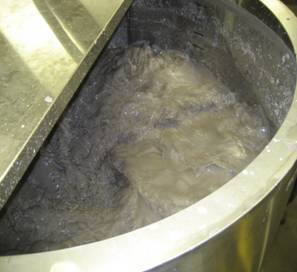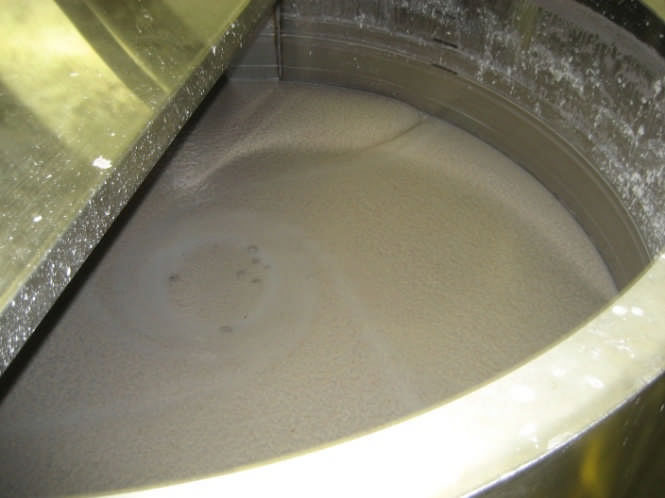 KMI Pulp Moulding Machines Inc.
KMI Pulp Moulding Machines Inc.


Standard formula:
There are many additives that you can use for pulp moulding to enhance the product.
These three additives are a standard formula that is commonly used for egg trays and cartons.
The Aluminum Sulfate is used to bring the PH of the water in the pulper to the required PH, it is added right into the pulper at the beginning of pulping.
Pexol 50 is added at the end of pulping, as the water is being added, to dilute the pulp for moulding.
Paracol is added a couple minutes after this. It would need to be diluted in about 2 liters of water when added.
Paper is most commonly added at 75%-80% ONP and 20%-25% OCC. These trays can be made with many alternative fibers, and the formula can be altered.
The processes for our systems are all the same and are very simple to operate.
Each system has a pulper that pulps fibrous material with water which turns it into a slurry mixture that is used to produce product.
KMI’s Green Approach
The more our societys' buy products that are packaged in pulp molded packaging the more trees we save and the fewer landfills we create. This environmentally friendly packaging reduces the amount CO2 released into our atmosphere, which decreases the producers’ contribution to global warming.
REDUCE - - CO2, CO, & NOx Emissions
RE-USE- - Energy
RECYCLE - - Recycled Raw Material
The Process
KMI conveyor dryers
Our dryers have a unique energy recovery system that is unlike other manufactures out there. These systems capture the heat energy in the exhaust. We then use a makeup air supply fan that returns this energy back to the dryer to be used over and over again. This process can reduce the use of fuel in the dryer by up to 40%.
We also capture energy from the seal water of the vacuum pump to reduce the need for a cooling tower. This process captures energy, and returns it back to the process water using a passive heat exchanger. The end result is recovered energy that can be used in the pulper to reduce the pulping time. This warm pulp will increase drainage in the forming process. The result will be tighter formed product with less moisture, that dries easier. This increases production by up to 20% and gives you a better product.
Burners
The sizes of the burners are matched to the weight of the product being dried. At KMI we use efficient, low emission, burners. The burner produces low CO and low than 20ppm NOx . This greatly reduces the amount of these toxic gases released into our atmosphere and their impact on the environment.
Pulping
The pulping time and the speed of the pulper is set by the operator, for optimum pulping performance.
Agitation
When the pulping is finished the pulper automatically fills, to bring the solution to 1% consistency for forming. When the pulper is empty the cycle starts over automatically.
Pulp Screen
The pulp solution automatically fills the moulding vat when the operator sets the main moulding system on auto. This pulp passes through a vibrating screen to remove any unwanted materials as it fills the circulation tank.
Transferring
The drum rotates to the transfer position where the product is picked up by the transfer. The transfer rotates over the conveyor and places it on the dryer. There is a transfer die cleaning and oiling system for optimum transfer performance.
Drying
The product passes through the dryer. The drying temperature is automatic, as it is preset by the operator on the main control panel.
Out Conveyor
The product is removed by an out conveyor. Those products that will not stack are packed by hand on a packing table.
Some of the differences, in our machines
• Our systems are made in modules. They can be easily connected together to ease installation (and also easily expanded, due to the module layout we use). They can also be moved quickly and efficiently (you could disassemble and move the system to a new location, and have it up and running again quite quickly). Once the system arrives in your facility it needs only to be connected to the services and vented outside, and it is ready to use. Our systems are completely self contained (you do not need to add anything to them or change the structure of the building to accommodate them).
• The moulder is robust and touch screen controlled (and again completely automated). We can even monitor and change parameters to assist you from our offices here in Florida, should you need any help.
• All of our water, air and process pipes are stainless steel for long life and durability.
• The pulpers, the moulder drum, transfer platen, vacuum tanks, white water tanks, die & decal wash tank, circulation tank and Moulding vat are all stainless steel for long life, durability, and ease of cleanliness.
• We use high efficient, low NOx & CO2 Maxon burners. Which are environmentally friendly and burn very efficiently.
• We have several heat exchange systems returning spent energy back into the process, to reduce the cost of production (ex: exhaust energy is returned back into the dryer to reduce drying costs, exhaust energy is returned into the white water tank to reduce costs and increase production, heat energy from the vacuum pump is returned into the die & decal wash tank to improve cleaning efficiency and reduce cooling costs) These heat exchangers reduce the cost of production by over 30%, and result in a better end product.
• Our dryers, stackers and product transfer systems are all automatic to reduce labour costs.
• Once the pulp is made, the complete system is controlled from the main panel for ease of operation.
There are other differences between our systems and the competitions. Our process is built in such a way to eliminate pumps. Our systems are built to be energy efficient, which is very important these days with the high cost of energy, and is always present in our minds when designing, constructing and promoting our systems.


